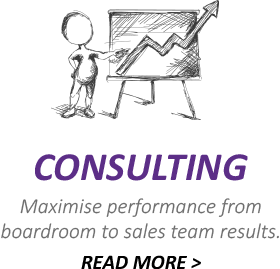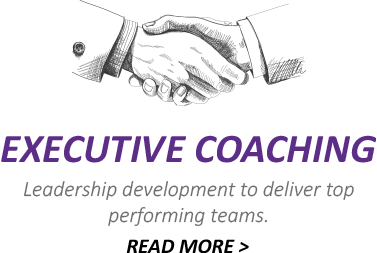Keep on keeping on
We take a look at the surprising statistics behind the sales and discover a sales person’s secret weapon.
We have all witnessed that amazing moment when a team comes from behind to score the winning goal just before the final whistle. A classic example would be that unforgettable win by Manchester United, who scored two goals after the ninetieth minute to win the European Cup.
“Keep on keeping on” is an often quoted sporting motto, but in reality, such perseverance doesn’t happen as often as it should. And in business, well, here that persistence is even rarer.
In fact one of the key ingredients of good selling is persistence; in the selling context, the “final whistle” is when the prospect says “I definitely don’t want your product or service.”
Until this point, there is always an opportunity to do business together.
So why do so many business people make the classic mistake of giving up too early?
These statistics produced by the National Sales Executive Association in the U.S make scary reading for any of us responsible for sales; in particular sales & marketing managers.
- 48% of sales people never follow up with a prospect after the first business meeting;
- 25% of sales people never make a second contact;
- 12% of sales people only make up to 3 contacts and then stop;
- 10% of sales people make more than 3 contacts;
These statistics are evidence of what amounts to a huge waste of time, money and effort. If you have targeted potential customers properly and then spent half an hour finding out about their situation (or probably more – a lot more), failure to follow through is like throwing money away.
If we contrast these statistics with figures based on contacts and sales success – where a “contact” covers meetings, letters, emails, phone calls etc. – we get a very interesting story:
- 2% of sales are achieved on the first contact;
- 3% of sales are achieved on the second contact;
- 5% of sales are achieved on the third contact;
- 10% of sales are achieved on the fourth contact;
- 80% of sales are achieved on the fifth to twelfth contact.
It’s also interesting to note the reasons why people stop buying;
- 1% die;
- 3% relocate;
- 5% follow recommendations;
- 9% find an alternative supplier whose products or service they perceive as better quality or value;
- 14% are dissatisfied with the product or service;
- 68% stop buying because of their supplier’s indifference: they take their business elsewhere because they feel undervalued.
Although these figures are quite astonishing, they represent an amazing opportunity; what is required to put this right is not difficult. One of the main reasons why follow-up is executed so badly is because people don’t realise they are doing it wrong.
The key point to take away is this: making lots of contacts delivers the goods. It doesn’t look pushy or, worse, desperate. In some business sectors the time from first contact to first contract may be as much as a year, and is often more, yet people stop making those contacts.
If 68% of buyers move to a new supplier because they feel undervalued, you can reasonably suppose that a similar proportion don’t buy in the first place for the same reason. Staying on the case is tough, but it produces the results.
All too often salespeople are wasteful with leads, they will quickly move on, always chasing the low hanging fruit. The perceived easy sale goes to the top of the pile regardless of the overall potential value other contacts may offer.
The result is that opportunities are wasted. Most sales managers spend half the day trying to get their sales teams to focus on realistic and achievable deals rather than running down the road to the next potential lead who might just have a budget with lots of zeros.
Business research has shown that many corporate projects simply drop down the priority agenda. The initially enthusiastic meeting, which doesn’t result in an order, doesn’t necessarily mean “no”; it could mean simply “not now”.
One client told me she never switches to a new supplier until they have been chasing her for six months; she wants to know they are really serious.
How many of your contacts may be adopting a similar approach?
It is important to know how long it normally takes you from first contact to first order. If you don’t know, find out; it’s worth discussing with colleagues and suppliers.
So, all that said, how do you do the follow-up without turning yourself into a pesky stalker? This is very important because it is where most of the problem lies. Phone calls and emails are cheap and easy methods of keeping in touch, so they are repeatedly used for follow-ups, but often salespeople can’t think of anything fresh to say so they don’t bother. Phone calls and emails form an important part of the process, but are not the whole process.
Just like the best sports teams have lots of ways of getting the ball in the back of the net, so should business teams. I use and recommend to all my clients that they send an old-fashioned personal letter. Have a range of postcards as part of your communication arsenal. Attend industry events and meet up with them there, invite them for demonstrations at your office. Offer to take them for a drink or spot of lunch. If you have corporate events invite them along. You and your contacts need variety to keep things fresh and keep them receptive to your message.
Record what works. One of the best pieces of advice I ever heard was this: ask why you got the order. You can then replicate that process every time. If you note down why you got the order, along with recording what activities work; you have a ready-made business structure which you can use time and time again.
One of the benefits of knowing these figures is that it helps justify your persistence. If you look back through your database, it is extremely likely that you will come across a number of prospective clients that weren’t followed up properly. Contact them and apologise; you might even quote some of these statistics to justify re-starting your conversation! You may just discover that they are now ready to buy.
A customer buys your service and products either regularly or from time to time, either way the needs of the business will change. Last year’s information may well be out of date and if you don’t maintain contact, you won’t know what’s changed and you could lose a valuable client or miss out on an important prospect. Remember: making lots of contacts delivers the goods.




